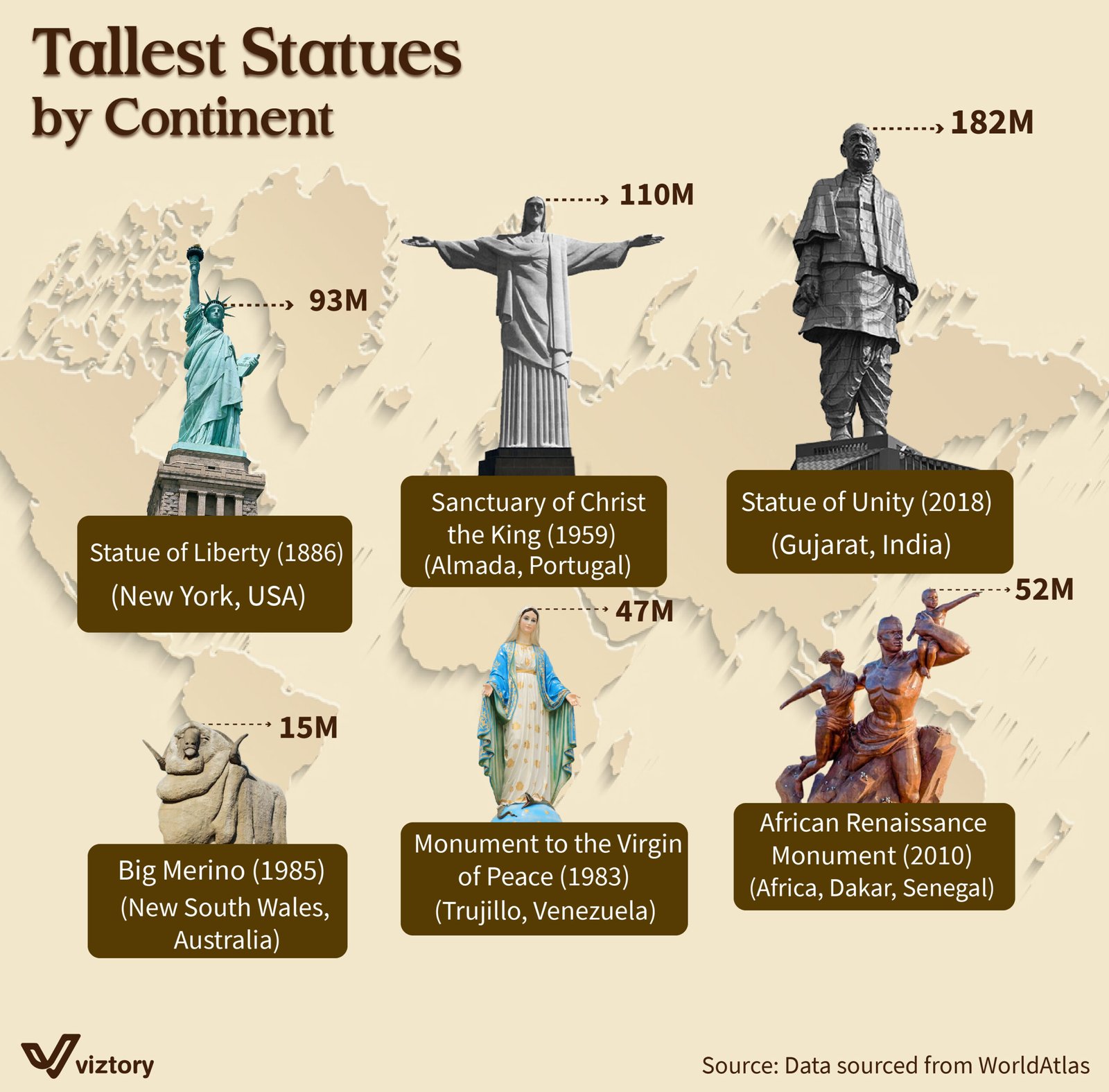The Tallest Statues by Continent
-
Oct, Fri, 2024
The Tallest Statues by Continent: Their Impact on Tourism and Marketing
The visualization showcases some of the tallest statues across different continents, including the Statue of Unity in India, the Statue of Liberty in the United States, and the African Renaissance Monument in Senegal, among others. These statues are not only cultural and historical symbols but also powerful marketing tools that attract millions of tourists annually, contributing significantly to local economies.
The Importance of Statues as Tourist Attractions
These statues serve as major tourist attractions, drawing visitors from around the world. For example, the Statue of Unity in India, which stands at 182 meters, is the tallest statue globally and a prominent symbol of national unity. By promoting these landmarks through social media and advertising, countries can attract a large number of tourists, boosting tourism spending and stimulating the local economy.
The Role of Statues in Destination Marketing
Highlighting iconic landmarks is essential in marketing any tourist destination. With a landmark as significant as the Statue of Liberty in New York, standing at 110 meters, the city can leverage this symbol of freedom to promote itself as a unique destination that embodies the values of liberty and opportunity. Similarly, the African Renaissance Monument in Senegal reflects Africa’s history and culture, making it a powerful tool for promoting cultural tourism on the continent.
The Economic Impact of Monumental Tourist Attractions
Large statues contribute to local economies in various ways. Beyond attracting tourists, they can be used to market local culture-related products and services. For instance, souvenirs and local products can be sold around these landmarks, adding economic value to the area. The statues also support eco-tourism, as is the case with the Sanctuary of Christ the King statue in Portugal, attracting visitors seeking unique experiences in nature.
Cultural Promotion Through Monumental Statues
As these statues are part of national identity, countries can leverage them to market their culture globally. For example, the Monument to the Virgin in Venezuela highlights the religious and cultural aspects of the country and can be used as a symbol in marketing campaigns to promote religious tourism. These landmarks help build a unique identity for the country and offer visitors a distinct cultural experience, enhancing its positive image worldwide.
Conclusion
Monumental statues serve as unique tourist attractions that carry great symbolic value and are effective tools for tourism marketing. By spotlighting these landmarks and leveraging them in well-planned marketing campaigns, countries can increase tourist inflow, which contributes to the local economy and promotes cultural understanding. These landmarks offer a golden opportunity to connect visitors with a unique experience that reflects the history, culture, and national values, giving countries a competitive edge in the global tourism market.

